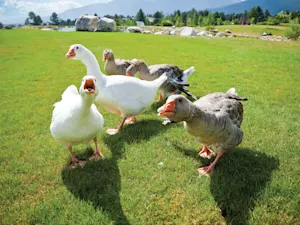
5 Shocking Facts About Trophy Hunting
Trophy hunting is a practice that has sparked global controversy, but there are many surprising aspects that are rarely discussed. Here's a look into some of the lesser-known facts about this divisive activity and its complex impact on wildlife conservation and communities.
1. Most Trophy Hunters Come From the US
 Theodore Roosevelt standing beside a dead elephant on a trophy hunting trip in Africa, circa 1909. Photo by Edward Van Altena, courtesy of the United States Library of Congress's Prints and Photographs division. Public Domain.
Theodore Roosevelt standing beside a dead elephant on a trophy hunting trip in Africa, circa 1909. Photo by Edward Van Altena, courtesy of the United States Library of Congress's Prints and Photographs division. Public Domain.
Americans comprise the majority of trophy hunters globally, with wealthy tourists driving demand. Although hunting facilities exist worldwide, Americans frequently travel to Africa and Canada for the experience. In 2015, U.S. hunters accounted for over 50% of lion hunts in South Africa's controversial "canned hunting" industry — a practice where captive animals are shot in enclosed areas.
2. Canned Hunting Guarantees a Kill
Canned hunting is a grim subset of trophy hunting where animals are bred in captivity, accustomed to humans, and confined to small spaces with no chance of escape. Popular in South Africa, this practice ensures that hunters secure a kill, often as animals are feeding and unaware. U.S. states like Texas have similar facilities, where exotic animals are used for such guaranteed hunts.
3. 'The Big 5' Are Trophy Hunters' Most Coveted Targets
 Stuffed Cape Buffalo Head. Photo by Lord Mountbatten. Public Domain.
Stuffed Cape Buffalo Head. Photo by Lord Mountbatten. Public Domain.
"The Big Five" — lions, leopards, elephants, rhinoceroses, and Cape buffalo — represent some of the most endangered and valuable animals in Africa. Originally labeled as "The Big Five" because of their size and the difficulty in hunting them, these animals are now emblematic of African wildlife. Ironically, their fame has turned them into the most desired trophies, despite conservationists' efforts to protect them.
4. Claims Over 125,000 Animals Annually

Every year, an estimated 125,000 animals are killed solely for the purpose of creating trophies. Between 2005 and 2014, over 1.26 million animal trophies were imported into the U.S. alone. The demand for big game trophies fuels an industry in which iconic animals, including lions, elephants, and leopards, are the most targeted.
5. Contribution to Conservation Is Disputed
While proponents argue that trophy hunting funds conservation, studies show that minimal revenue reaches local communities or conservation efforts. A 2019 report found that the majority of big-game zones in Zambia and Tanzania were severely depleted due to over-hunting. Critics argue that the animals targeted are often from endangered populations, and funds from trophy hunting are insufficient to compensate for the ecological damage caused.
Trophy hunting remains one of the most controversial methods of wildlife management, drawing criticism and raising ethical questions about conservation and animal welfare across the globe.
References: Trophy hunting: Is it beneficial or detrimental to conservation and can killing wildlife for a trophy ever be justified? | 8 Trophy Hunting Facts That Will Make You Scream























